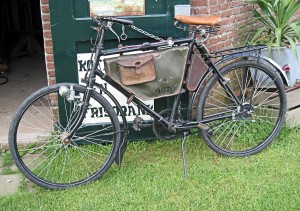The great Swiss watch manufacturer Omega took the polar opposite approach to archrival Rolex’s conservatism during the turbulent 1960s and 70s. If Rolex was almost entirely unwilling to deviate from their main design concepts and stayed restrained in the face of the funky fashions sweeping the watch world, Omega was ready and willing to try a little bit of everything to capture the spirit of the times and the dollars, francs, pounds and yen of the trendsetters of that era. As characteristic of the 1970s as boot cut jeans and polyester leisure suits, Omega’s chunky and near Pop-art chronographs of this period make a retro statement like few other watches. They’re not to everybody’s taste to be sure but for those that enjoy wearing these colorful beasts there’s great fun to be had by taking a time trip to the past.
Jumping off from their enormously successful Speedmaster Professional (aka “The Moonwatch”), Omega decided to let their design team smoke a little of the good stuff and have some fun creating a new range of Speedmaster and Seamaster chronographs incorporating newly developed case shapes and calibers. At first designs like the Speedmaster Mark II & III had the traditional black dials/white hands like their predecessor but soon a veritable rainbow of colors was busting out all over. The newly launched manual wind caliber 861 and new automatic chrono caliber 1040, both Lemania-based, seemed to lend themselves to inventive case shapes and color schemes, as Omega chased fashion trends with massive tonneau cases and dispensed with conventional lugs altogether.
Of course, as a proud supplier to NASA, Omega were also intent on expanding on their “Professional” line to be maximally useful to the aeronautic industry. Continue reading












